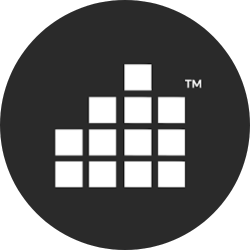Social media is no longer just a “nice-to-have” in your marketing toolkit—it’s a business essential. Whether you’re a local service provider or a growing small business, having the right social media strategy in place can boost visibility, drive engagement, and generate leads. But with so many platforms out there, the real question is: Which ones should your business be on?
Spoiler alert: You don’t have to be on all of them. In fact, you shouldn’t be. Being strategic about where you show up makes a bigger impact than spreading yourself too thin.
Let’s walk through how to make that decision the smart way.
1. Know Your Audience
Before you even think about posting, take a step back and ask: Who am I trying to reach?
Understanding your audience is the foundation of any successful marketing strategy. Get specific: What’s their age range? Gender? Where do they live? What are their interests? Are they scrolling late at night, or checking in during lunch breaks?
For example:
- If your audience is mostly Millennials or Gen Z who love short-form video content, Instagram and TikTok might be a great fit.
- Targeting busy professionals or decision-makers in the B2B space? LinkedIn could be your sweet spot.
- Looking to engage with a local community or share timely updates? Facebook still reigns supreme in that space.
Your ideal platform is the one where your audience already hangs out—and where your content can meet them naturally.
2. Consider Your Industry
Not every platform works the same across all industries. Some lend themselves to visuals, others to conversations or professional networking.
Here’s a quick breakdown:
- Visual-heavy industries like restaurants, med spas, interior designers, and event venues thrive on Instagram and Pinterest. Beautiful photos and videos speak volumes in these spaces.
- Hospitality businesses—like hotels or boutique rentals—can take advantage of Instagram’s aesthetic appeal while also building trust with behind-the-scenes content on Facebook.
- B2B businesses such as IT companies, accountants, or healthcare providers often find the most value on LinkedIn, where decision-makers are actively looking for solutions. But don’t overlook Facebook, especially when it comes to building trust and connecting with your local audience. A strong presence on both platforms helps you stay top-of-mind with the right people, right where they are.
- Ecommerce brands may benefit from platforms like Instagram, TikTok, or Facebook Shops, where users are used to discovering and buying directly.
The goal is to match your content style and message to the platform that best supports it.
3. Look at Your Competitors
Don’t just guess—investigate. A quick look at what your competitors are doing can reveal a lot.
- What platforms are they using consistently?
- Where do they seem to get the most engagement (likes, comments, shares)?
- Are they missing opportunities you could step into?
You don’t want to copy your competitors, but you do want to learn from what’s working (and what isn’t). If you notice that several local competitors are absent on a platform your audience uses, that might be your chance to stand out.
💡 Pro Tip: Use this insight to shape not only your platform choices, but your content strategy too.
4. Align With Your Business Goals
Social media should support your overall business goals—not distract from them.
Ask yourself: What are you hoping to accomplish?
- Brand awareness? Platforms like Instagram, Facebook, and TikTok can help you reach new audiences quickly.
- Lead generation? LinkedIn and Facebook (especially with ads) can be powerful tools for bringing in new business.
- Customer service? Facebook and Instagram DMs have become key touchpoints for answering questions and resolving issues quickly.
Choosing the right platform means choosing the one that’s best suited to help you meet those goals. It’s not about what’s trendy—it’s about what drives results.
5. Use Analytics to Guide You
One of the best things about social media today is the data that comes with it. Almost every platform has built-in tools that show you what’s working and what’s not.
Once you’re active on a platform, regularly check metrics like:
- Engagement rate (likes, comments, shares)
- Reach (how many people are seeing your content)
- Click-throughs or conversions (are people taking action?)
This isn’t just for performance tracking—it’s fuel for smarter decisions. If one platform consistently underperforms, it might be time to shift your focus. If another is doing great, you might want to double down.
At Rock City Digital, we’re big believers in data-driven decisions. And when we work with our clients, we don’t just hand over a report—we walk through it with you so you actually understand what the numbers mean for your business.
6. Think Bigger: Integrated Marketing
Social media shouldn’t live in a silo. The best results come when it’s part of a larger marketing ecosystem.
That means:
- Promoting your blog posts or website content on social media.
- Encouraging email sign-ups through Facebook or Instagram.
- Running retargeting ads based on social engagement.
- Driving traffic back to your website to convert leads.
By syncing up your social platforms with other channels, you create a cohesive brand experience that guides your audience through the full customer journey—from awareness to action.
And yes, that’s something we help clients with every day. Because marketing works best when all the pieces are working together.
Choose Platforms With Purpose
The key takeaway? Be intentional.
Choosing the right social media platforms isn’t about doing it all—it’s about doing what works. That starts with understanding your audience, your industry, and your goals. From there, use data to refine your strategy and keep things aligned with your bigger marketing picture.
Whether you’re just getting started or trying to level up your existing presence, choosing your platforms with purpose is how you turn followers into customers—and customers into loyal fans.
Need help figuring out the best platform mix for your business? Let’s talk. We’d love to get to know your goals and help you build a strategy that actually works.




